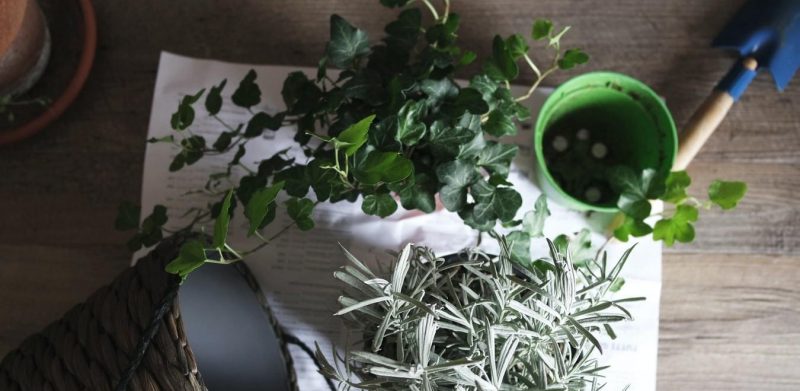Indoor plants – Repotting

What is repotting?
Repotting is the operation of changing the initial pot with a larger one, which implicitly leads to the partial change of the substrate.
When we should repot plants?
Repotting should be done when the roots have filled the entire volume of the pot and no longer have space to grow properly. This aspect also affects the development of the above-ground parts, as well as the flowering stage. The main signs that the plant needs a new pot are: slow growth, the rapid drying of the substrate after watering, the roots begin to come out through the drain holes in the pot, which leads to their browning.
The repotting operation has to be performed at a certain time interval, depending on the growth rate of the plants. Usually, in the case of young plants, transplanting is done at 1-2 years, while in the case of mature ones, it is done once every 4-6 years.
The best time for repotting, in the case of most species, is spring, after the plant begins its vegetative growth, after the relative dormancy period (which takes place in winter).
If, however, it is necessary, you can change the pot at any time of the year. Two exceptions are the flowering period and the moments immediately before flowering when repotting is not indicated, as the stress suffered by the plant after the procedure can lead to the loss of the flowers or buds.
How is reppoting done?
To repot the plants, choose a pot with a diameter that is 2-4 cm larger than the original one. The plant is removed from the pot, and if necessary, slight trimming of the roots is done. Remove dead, diseased, or roots that are too long.
In the case of plants kept in small pots, whose roots have grown and taken the shape of the pot, it is recommended that they be carefully detached, eliminating the clump of roots formed at the base of the pot. Thus, new roots will develop and the plant will be able to feed properly.
At the base of the new pot should be placed a layer of gravel, clay balls, or even pieces of ceramic. This will help to achieve proper water drainage. After that, add a layer of soil.
After trimming the roots, the root ball must be placed on the added layer of soil. Then, add a sufficient amount of substrate, all around it. The root ball has to be positioned in pots so that 1-2 cm of the substrate can be added above it. Still, there must be enough space left to water the plant (about 2 cm from the edge of the pot).
In the case of mature plants, when the pot is already large and difficult to handle, only change the substrate from the surface. For that, remove as much substrate as possible from the surface and add the fresh one. This operation can be performed twice a year, in spring and at the end of summer.
Newly purchased plants cannot be transplanted immediately.
If they need to be transplanted, it is recommended to change the pot after at least two weeks from the purchase, during which time the plants can adapt to the new environmental factors.
CAUTION! The plants must not be fertilized immediately after repotting.
The fertilizer can be applied at least 10-15 days after changing the pot. However, after repotting a stimulant can be administered to help the rooting process.
Recommended products
-
You can find products on a different store
Change Store -
You can find products on a different store
Change Store -
You can find products on a different store
Change Store -
You can find products on a different store
Change Store -
You can find products on a different store
Change Store -
You can find products on a different store
Change Store -
You can find products on a different store
Change Store -
You can find products on a different store
Change Store -
You can find products on a different store
Change Store -
You can find products on a different store
Change Store -
You can find products on a different store
Change Store -
You can find products on a different store
Change Store -
You can find products on a different store
Change Store -
You can find products on a different store
Change Store -
You can find products on a different store
Change Store -
You can find products on a different store
Change Store -
You can find products on a different store
Change Store -
You can find products on a different store
Change Store -
You can find products on a different store
Change Store -
You can find products on a different store
Change Store -
You can find products on a different store
Change Store -
You can find products on a different store
Change Store -
You can find products on a different store
Change Store -
You can find products on a different store
Change Store















































































































































































































































































































































































































































